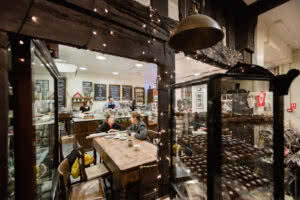According to the legend that is David Ogilvy, on average, five times as many people read the headline as those who read the body copy. That’s a lot of pressure to get your headline bang on if that’s your only window of opportunity with the majority of your audience. Whether you’re writing an advertisement, a press release or an important email, you only have a very short time to get your message across. So here are some tips on how to maximise your chances:
First things first
It sounds obvious but first, you need to decide what that message is. Here are a couple of examples:
- You need to be able to express what your event is/what you want your audience to perceive it as in a nutshell. Is it heaven for dogs and their owners? Is it the leading international conference for heart surgeons? Or a vintage car show for car enthusiasts? There may be more to it than that but you need to be able to describe your event in as few words as possible. (This will also aid you in presenting tight briefs to your agencies, getting stronger work back from them and keeping a lid on design costs.)
- If you’re running an event with a list of exhibitors, ensure they upload their company details to your website. This will help you avoid being too ‘salesy’ in your event proposition, whilst providing a clear message of what will be on offer.
Everyone is time-short and bombarded with messaging 24/7 these days so you need to nail your message first and get it across in the most concise way. If people are engaged and have the time they’ll read on.
I’m talking to YOU
Getting your message across relies on the interaction between you and your target audience. They need to identify themselves as who you are talking to so consider them when selecting your media, vocabulary, tone of voice and the timing of your communication. At a time when people receive hundreds of emails and digital advertisements of one kind or another, “going back” to print may give you the point of difference you need.
Once you’ve chosen your communication channel, how you present your messaging and the overall design of the piece should also take cues from the target audience. Are you talking to aspiring professionals, hobbyists with a passion, or teenagers looking to be creative and share social content? This is an essential part of the brief to any creatives working on your event communications.
You also need to consider what is important to your target audience and what your unique selling point is. It’s about their priorities as well as yours so you need to decide what one piece of information you want your target audience to absorb if they don’t read anything else.
What, where, when, usually with where to go next e.g. website, box office, etc. are essential in any event communications and should be immediately apparent. Beyond that, think about what else your audience needs/wants to know. Depending on your event and its desired audience any cost implications may also be important and sort the ‘no’s’ from the ‘maybes.’
Consistency
Consistency is very important throughout your dialogue with your audience; in terms of what you’re saying and how it’s presented. Without consistency of the core message, it can become distorted and unclear to those you want to respond. You also want to ensure the right people respond to your messaging in the desired way. For example, if you’re promoting an event for all the family, make sure this is apparent in all your touch points with appropriate text, imagery and content.
A good time-saver which aids consistency is to draft a couple of short paragraphs about your event (which include your key messages) that you can then use wherever you need to supply some event copy to a third party e.g. for event listings, the venue website, colleagues, exhibitors and other stakeholders. Rather than writing new copy each time you can quickly attach this to an email or cut and paste it onto a website.
Design wise
How your messaging appears plays a significant part in if and how it is received. In most circumstances, if it is difficult to read you’re already losing people. Avoid placing text on busy backgrounds or using colours that are too close together on the colour wheel e.g. white text on a yellow background. Conversely, good use of colour and design can considerably assist in your communications. Of course, there are exceptions where designers have ‘broken the rules’ resulting in highly impactful creative which stands out precisely because it doesn’t conform. That’s great if it works for your event and audience.
Make it accessible
Consider the location of your messaging and make it accessible in the most appropriate way. If you’re emailing exhibitors say what the email is about in the subject line so if they need to refer back to it, such as when you call them to ask if they’ve done what you asked of them, they can easily find it amongst the hundreds of emails clogging up their inboxes. Likewise, make sure your essential visitor information page is near the top of your navigation. Avoid losing people unnecessarily by making them hunt for the information. Carefully worded, presented and accessible messaging will help make your audience feel positive about the event whether they’ve signed up to exhibit, participate or visit and they will be more open to future communication from you.
To conclude, whilst there’s no guarantee that your chosen audience will read your communications end to end, giving them careful thought from the outset, keeping your audience front of mind and the information readily available will certainly help to get your messages across.





